25 Fun Mindfulness Activities for Children & Teens (+Tips!)
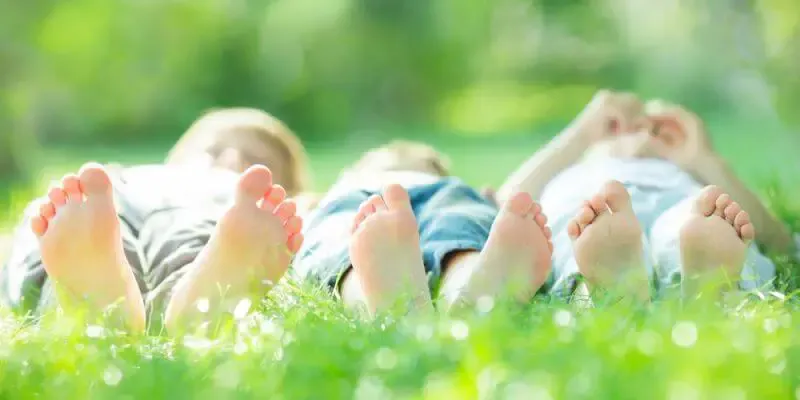 Mindfulness can boost the quality of our lives in numerous ways.
Mindfulness can boost the quality of our lives in numerous ways.
In today’s rush, we all think too much—seek too much—want too much—and forget about the joy of just being.
– Eckhart Tolle
What does mindfulness do to spark “the joy of just being” that Tolle references? And, how can we teach kids to start benefiting from its practice?
This article delves into both of these questions and includes plenty of activities for you to start using today.
Research confirms that for children, mindfulness can:
- Mitigate the effects of bullying (Zhou, Liu, Niu, Sun, & Fan, 2016);
- Enhance focus in children with ADHD (Zhang et al., 2016);
- Reduce attention problems (Crescentini, Capurso, Furlan, & Fabbro, 2016);
- Improve mental health and wellbeing;
- Improve social skills when well taught and practiced with children and adolescents.
It’s also important for caregivers and educators to provide age-appropriate mindfulness practices to children.
For example, fostering mindfulness in preschoolers with tools like pictures, objects, food, simple movements, and music, can help them develop an ability to better focus their attention and stay present.
In a study by Flook et al., (2015), kids were asked to engage in an activity called “Belly Buddies”, in which they listened to music while also noticing the sensation of a small tone on their stomachs rising and falling with each breath.
The kids became more attune to their bodies, breath and to the music.
Ultimately, simple activities like these can have long-lasting developmental benefits when practiced regularly.
Want more? We have 25 mindfulness activities designed specifically for children. Plus, they are fun to do.
But, before you read on, we thought you might like to download our three Mindfulness Exercises for free. These science-based, comprehensive exercises will not only help you cultivate a sense of inner peace throughout your daily life but will also give you the tools to enhance the mindfulness of your children, students or young clients.
This Article Contains:
- 4 Fun Mindfulness Activities and Exercises for Children
- 15 Tips for Teaching Mindfulness to Kids and Teenagers
- 8 Mindfulness Games, YouTube Videos, and Apps to Support Your Teachings
- 3 Mindfulness Training Classes For Children with Anxiety
- The Basics: Teaching Essential Mindfulness Practices and Skills
- Mindfulness Meditation for Very Young Children
- The Benefits Of Mindfulness In Schools (K12) + Videos
- A Take-Home Message
- References
4 Fun Mindfulness Activities and Exercises for Children
Let’s start with these simple ways to attune children with their bodies. At a young age, humans naturally curious about the strength and flexibility of their bodies. It’s a great age to introduce body-mind awareness as a valuable way to take care of themselves.
Mindful Posing
One easy way for children to dip their toes into mindfulness is through body poses. To get your kids excited, tell them that doing fun poses can help them feel strong, brave, and happy.
Have the kids go somewhere quiet and familiar, a place they feel safe. Next, tell them to try one of the following poses:
- The Superman: this pose is practiced by standing with the feet just wider than the hips, fists clenched, and arms reached out to the sky, stretching the body as tall as possible.
- The Wonder Woman: this pose is struck by standing tall with legs wider than hip-width apart and hands or fists placed on the hips (Karen Young, 2017).
Ask the kids how they feel after a few rounds of trying either of these poses. You may be surprised.
Spidey-Senses
While on the subject of superheroes, this can be a related “next step” to teach kids how to stay present.
Instruct your kids to turn-on their “Spidey senses,” or the super-focused senses of smell, sight, hearing, taste, and touch that Spiderman uses to keep tabs on the world around him. This will encourage them to pause and focus their attention on the present, opening their awareness to the information their senses bring in (Karen Young, 2017).
This is a classic mindfulness exercise and encourages observation and curiosity—great skills for any human to practice.
The Mindful Jar
This activity can teach children how strong emotions can take hold, and how to find peace when these strong emotions feel overwhelming.
- First, get a clear jar (like a Mason jar) and fill it almost all the way with water. Next, add a big spoonful of glitter glue or glue and dry glitter to the jar. Put the lid back on the jar and shake it to make the glitter swirl.
- Finally, use the following script or take inspiration from it to form your own mini-lesson:
“Imagine that the glitter is like your thoughts when you’re stressed, mad or upset. See how they whirl around and make it really hard to see clearly? That’s why it’s so easy to make silly decisions when you’re upset – because you’re not thinking clearly. Don’t worry this is normal and it happens in all of us (yep, grownups too).
[Now put the jar down in front of them.]
Now watch what happens when you’re still for a couple of moments. Keep watching. See how the glitter starts to settle and the water clears? Your mind works the same way. When you’re calm for a little while, your thoughts start to settle and you start to see things much clearer. Deep breaths during this calming process can help us settle when we feel a lot of emotions” (Karen Young, 2017).
This exercise not only helps children learn about how their emotions can cloud their thoughts, but it also facilitates the practice of mindfulness while focusing on the swirling glitter in the jar.
Try having the kids focus on one emotion at a time, such as anger, and discuss how the shaken verse settling glitter is like that emotion.
Safari
The Safari exercise is a great way to help kids learn mindfulness. This activity turns an average, everyday walk into an exciting new adventure.
Tell your kids that you will be going on a safari: their goal is to notice as many birds, bugs, creepy-crawlies, and any other animals as they can. Anything that walks, crawls, swims, or flies is of interest, and they’ll need to focus all of their senses to find them, especially the little ones (Karen Young, 2017).
A similar exercise for adults is the mindfulness walk. This exercise provokes the same response in children that a mindful walk elicits in adults: a state of awareness and grounding in the present.
If you’re interested in more information on how to encourage the practice of mindfulness in children and teens, you can check out the other exercises from this website. Otherwise, head on to the next section where we lay out key tips for teaching these concepts.
15 Tips for Teaching Mindfulness to Kids and Teenagers
When you are trying to teach your kids or young clients about mindfulness and its benefit, we recommend you begin with a few guidelines:
- Make sure they are ready to give mindfulness a try; if they are full of energy and itching to run and play, it may not be the best time for practicing mindfulness for the first time.
- Explain what mindfulness is and what it is not; give examples of what seems similar to mindfulness but is not (i.e., introspection or chasing thoughts down the “rabbit hole” versus listening to our bodies).
- Say it in an age-appropriate way, with words they will understand.
- Offer to practice mindfulness with them; sometimes having a model makes all the difference.
- Assure them that it’s okay to get off track, and how to gently guide themselves back to mindfulness when they realize they lost focus.
- Finish the practice by doing something they enjoy with them to ensure they have a positive experience.
Megan Cowan, co-founder, and co-director at the Mindful Schools program in Oakland, also has some tips on how to teach mindfulness to kids (2010):
- Keep the purpose of mindfulness practice in mind. Be sure to engage in mindful practice with children in positive situations, and never use it as a disciplinary tool.
- Make sure you practice mindfulness yourself!
- Set a daily routine for practicing mindfulness to make sure you incorporate it.
- Prepare the environment for successful practice; move the furniture around or have everyone switch positions.
- Involve students in the process; perhaps designate a different child each day to alert the class when it’s time to practice mindfulness or help set up any tools or props.
- Share your own experiences with the kids; this will help them understand how mindfulness is applied and practiced in everyday life. Feel free to share how you redirect yourself when you feel distracted during a mindfulness session.
- Encourage the children to share their experiences as well, whether they were good experiences with mindfulness or experiences in which they got distracted. Maybe each session can end with a few students sharing how it went for them.
- Practice every day. The more you embed mindfulness into the daily routine, the easier it is to engage.
Cowan (2010) also includes a short script if you’d like to use her mini-lesson.
Relay the following instructions to your kids:
- “Please get into your mindful bodies–still and quiet, sitting upright, eyes closed.”
- “Now place all your attention on the sound you are about to hear. Listen until the sound is completely gone.”
- Ring a “mindfulness bell,” or have a student ring the bell. Use a bell with a sustained sound or a rain stick to encourage mindful listening.
- “Please raise your hand when you can no longer hear the sound.”
- When most or all have raised their hands, you can say, “Now slowly, mindfully, move your hand to your stomach or chest, and just feel your breathing.”
- You can help students stay focused during the breathing with reminders like, “Just breathing in … just breathing out …”
- Ring the bell to end.
For more in-depth tips and ideas on teaching mindfulness to children, check out the book Planting Seeds: Practicing Mindfulness with Children by Thich Nhat Hanh and the Plum Village Community.
The website from editor and children’s book author Annaka Harris also provides some great ideas for exercises that teach mindfulness to children.
8 Mindfulness Games, YouTube Videos, and Apps to Support Your Teachings
Technology offers learning and development for these practices. To ensure that you are using technology to your advantage when it comes to teaching children mindfulness, give some of these resources a try.
Smiling Minds App
Another application that is popular for children as young as seven is the Smiling Mind app. This app is available through the Apple app store as well as the Google Play store. It is free to download and use.
This app offers similar features to the Mindfulness for Children app, including a body scan activity. There are dozens of modules with hundreds of sessions available, each customized for wellbeing, education, and the workplace (for adults).
If you’d like to check out the reviews for this app or learn more about it, visit the website.
Still Quiet Place
If you’d like to use a video to help your kids learn how to practice mindfulness, the “Mindfulness Exercises for Kids: Still Quiet Place Video” is a great resource. This animated video can help students learn how to go to a “still quiet place.”
Check out the video here, and scroll down to the link below the video to see more activities from GoZen.com.
Mindfulness Games for Kids
Several interactive games are available on the Kids Activities Blog. Here are just a few:
- Blowing bubbles. Have your kids focus on taking in a deep, slow breath, and exhaling steadily to fill the bubble. Encourage them to pay close attention to the bubbles as they form, detach, and pop or float away.
- Pinwheels. Use the same tactics from blowing bubbles to encourage mindful attention on the pinwheels.
- Playing with balloons. Tell your kids that the aim of this game is to keep the balloon off the ground, but have them move slowly and gently. You can tell them to pretend the balloon is very fragile if that helps.
- Texture bag. Place several small, interestingly shaped or textured objects in a bag. Have each child reach in and touch an object, one at a time, and describe what they are touching. Make sure they don’t take the object out of the bag, forcing them to use only their sense of touch to explore the object.
- Blindfolded taste tests. Use a blindfold for each child and have them experience eating a small food, like a raisin or a cranberry, as if it was their first time eating it.
If you want to know about more games you can play with children to teach them about mindfulness, check out the book Mindful Games: Sharing Mindfulness and Meditation with Children, Teens, and Families by Susan Kaiser Greenland.
2 Mindfulness Training Classes For Children with Anxiety
Mindfulness practice can be an especially important component of a child’s life if they suffer from anxiety. Learning about mindfulness and how to engage in mindfulness can help a child realize that worrying is normal, and there are useful coping methods when we are worrying too much.
Aside from the Mindful Schools program mentioned earlier, there are classes and programs designed especially for children, and even a few that are structured for children with anxiety.
Child Mind Institute focus on education, care and science, and offers various programs. Programs are customised to your needs, so contact them via their website to book for a workshop.
There is also a popular course called “MonkeyMind and Me: A Mindfulness Course for Children.” Children learn how to meditate and practice mindfulness over eight one hour sessions held over eight weeks.
The lessons are delivered through stories about MonkeyMind, a friendly puppet who has trouble with self-regulation (“MonkeyMind and Me”, 2017). The course includes lessons, opportunities to practice, design of a homemade project, and a graduation ceremony.
The structure of these lessons and exercises transforms teaching mindfulness into an experience everyone might enjoy—and benefit from.
The Basics: Teaching Essential Mindfulness Practices and Skills
Before you delve into the classroom, review these basic skills and you may have better success with students and clients learning mindfulness.
Mindful Breathing
Mindful breathing is a staple of practicing mindfulness. It is the foundation of many other exercises. To help kids learn how to engage in mindful breathing, you can use a video like the one below:
This video guides children through a breathing meditation by instructing them to imagine a sailboat that rises and falls as they breathe; with each inhale and exhale, the boat moves gently on top of the water.
They also get an opportunity to visualize their breath with a color and focus on the experience of their breath moving through their nostrils. Lastly, the video ends with the exercise of the children imagining (with their eyes closed) that they used to be a fish and paying attention to how it would feel to breathe through their lungs for the first time.
Body Scan
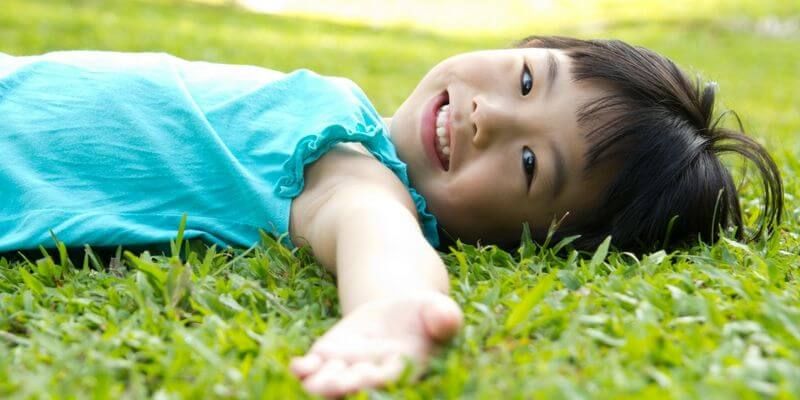
- Have your kids lie down on their back on a comfortable surface and close their eyes;
- Then tell them to squeeze every muscle in their body as tight as they can.
- Tell them to squish their toes and feet, squeeze their hands into fists, and make their legs and arms as hard as stone;
- After a few seconds, have them release all their muscles and relax for a few minutes;
- Encourage them to think about how their body is feeling throughout the activity (Roman, 2015).
This simple exercise gets kids to be more aware of their bodies and helps them find a way to be present in the moment.
Heartbeat Exercise
Paying attention to one’s heartbeat has a role in many mindfulness exercises and activities. To begin, tell your kids to jump up and down in place or do jumping jacks for one minute.
When they have finished, have them sit down and put a hand over their heart. Instruct them to close their eyes and pay attention only to their heartbeat and, perhaps, their breath as well (Roman, 2015).
This exercise teaches children to notice their heartbeat, and use it as a tool to help their focus. These skills will come in handy as they start engaging in more advanced mindfulness activities.
Mindfulness Meditation for Very Young Children
You might be thinking that these tips and exercises are great for elementary or middle school students, but less realistic for young children. This section focuses on children who are toddlers through kindergarten graduates.
One mother explained laid out her five strategies for teaching young children mindfulness—starting with her three-year-old child learning mindfulness.
Her strategies are:
- Teach kids to recognize and identify their own emotions. Children need to associate the word or term for an emotion with the actual experience of feeling that emotion. Encourage them to think about how each emotion feels in their body. Does anger feel like they’ve got steam coming out of their ears? Does love make them feel like their heart is going to burst open?
- Validate their emotions. Children often respond with frustration or sadness when told that their pain, however trivial it seems to us, is “not a big deal.” When teaching mindfulness, let kids feel their feelings without fear of judgment. Focus instead on teaching them tools to listen to their emotions.
- Teach kids mindful breathing strategies. As we noted above, mindful breathing is a building block in all mindfulness practices. Children benefit from focusing on their breathing when confronted with emotions that are hard to manage.
The author of the blog laid out three techniques she has put to use with her children:
1. Noticing the breath: this involves simply paying attention to what breathing actually feels like.
2. Five-finger starfish meditation: this breathing technique has kids holding up one hand in a starfish position (fingers spread wide) while they gently trace up and down each finger with the other hand, focusing on regular breathing at the same time.
3. Counting the breath: this technique is what it sounds like: have your children pause and count their breaths. One breath in is “1”, the next breath out is “2,” etc. You can have them count to 10 if they’re very young, or slightly higher depending on their abilities.
- Lead them in a guided meditation. Use a script or an exercise or app like the ones described above for this meditation.
- Practice what you preach. As we mentioned earlier, it is so important to actually “do as you say.” Kids are intuitive and human nature encourages mimicry, two advantages we can harness when trying to teach (Beach, “Baby Buddhas.”)
Guide your kids every step of the way, but make sure you are taking those steps yourself as well. It will make everyone’s practice richer.
The Benefits Of Mindfulness In Schools (K12) + Videos
Childhood and adolescence are important developmental stages that will construct the groundwork for mental health in the adult developmental stage.
In recent literature, mindfulness-based school programs have demonstrated a range of social, cognitive, and emotional benefits for elementary and middle-school students.
Cognitive Benefits
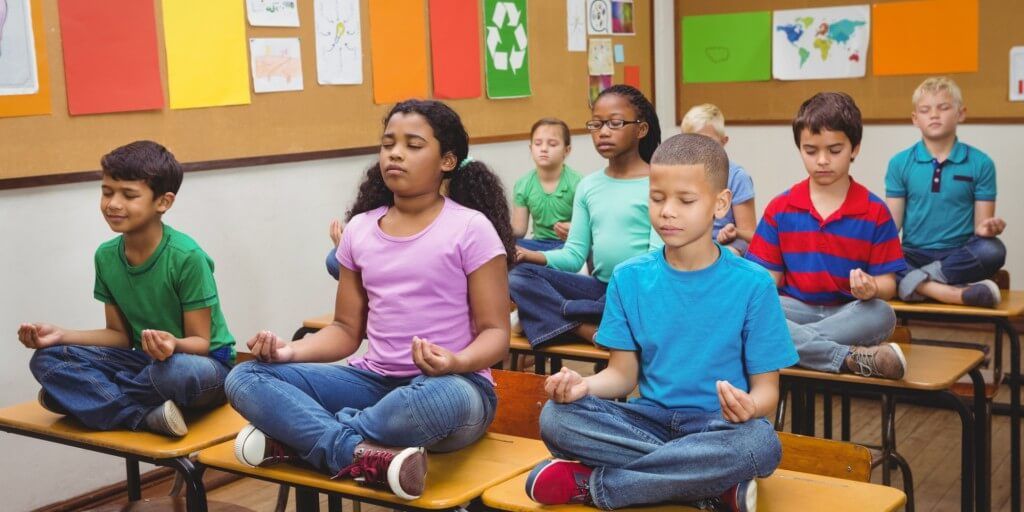
Research in education suggests that mindfulness practice can lead to improvements in executive function in children.
For instance, in the study of Flook et al., (2010) conducted on 3rd graders, students who went through an 8-week mindfulness program showed improvements in behavioral regulation, metacognition, and focus compared to the control group who did not have the mindfulness program.
In another study, students who had a 24-week mindfulness training scored higher in attentional measures in their elementary school (Napoli et al., 2004). Additionally, a study on preschoolers emphasized that children who went through a mindfulness curriculum for 12 weeks earned higher marks on academic performance measures. They also showed greater improvements in areas that predict future success (Flook et al., 2015).
Social Benefits
A social skill is any skill that we use to interact and communicate with others.
Deficits and excesses in social behavior can affect learning, understanding, and classroom climate. Recent research on lower-income and ethnic minority elementary school children highlighted how a 5-week mindfulness curriculum can lead to better participation in activities, as well as nurture a classroom culture of mutual respect and care in 9th-grade students (Black et al., 2013).
Emotional Benefits
Emotional health, which is a positive sense of wellbeing, is an important component of child and adolescent development. Emotional problems such as anxiety, stress, and depression can affect self-esteem, performance, and social interactions.
Mindfulness practice may facilitate the ability to manage stress, and also lead to deeper wellbeing in students.
According to one study by Schonert-Reichl and his colleagues (2010), mindfulness practice leads to higher scores on self-report measures of optimism and positive emotions in elementary school students.
Moreover, in a study conducted by Wall (2005), self-reported findings showed preteens feeling calmer, with an enhanced experience of well-being—and improved sleep—after a 5-week modified mindfulness-based stress reduction program.
Videos on Mindfulness in Schools
These four videos can help students open their minds to the benefits of mindfulness. We recommend pairing any of these segments with a discussion.
Questions for after the selected clip can include, “Has anyone practiced mindfulness, and how has it gone for you?” or “What do you think is the reason most people do not practice mindfulness, and how can we start changing this?”
A Take-Home Message
Research confirms that mindfulness can improve mental health by aiding wellbeing, attention, self-regulation, and social competency. It just needs to be practiced—and encouraged.
Mindfulness-based programs in schools can have a life-long impact on the psychological, social, and cognitive wellbeing of children and teens. Even at home or with clients, how can you incorporate mindfulness into your teachings and own schedule?
Do you have kids or work with kids on a regular basis? Try these tips and activities out, and let us know how they worked in the comments section below.
Good luck, and remember this old saying:
Tell me and I forget. Teach me and I remember. Involve me and I learn.
We hope you enjoyed reading this article. Don’t forget to download our three Mindfulness Exercises for free.
- Beach, S. R. (2014). 10 Ways to Teach Mindfulness to Kids. Retrieved from www.leftbrainbuddha.com.
- Black, D. S., & Fernando, R. (2013). Mindfulness training and classroom behavior among lower income and ethnic minority elementary school children. Journal of Child and Family Studies, 1-5.
- Cowan, M. (2010, May 13). Tips for teaching mindfulness. Retrieved from www.greatergood.berkeley.edu
- Crescentini, C., Capurso, V., Furlan, S., & Fabbro, F. (2016). Mindfulness-oriented meditation for primary school children: Effects on attention and psychological well-being. Frontiers in Psychology, 7, 805.
- Daigneault, I., Dion, J., Hébert, M., & Bourgeois, C. (2016). Mindfulness as mediator and moderator of post-traumatic symptomatology in adolescence following childhood sexual abuse or assault. Mindfulness, 7, 1306-1315.
- Flook, L., Smalley, S. L., Kitil, M. J., Galla, B. M., Kaiser-Greenland, S., Locke, J., … & Kasari, C. (2010). Effects of mindful awareness practices on executive functions in elementary school children. Journal of Applied School Psychology, 26(1), 70-95.
- Flook, L., Goldberg, S. B., Pinger, L., & Davidson, R. J. (2015). Promoting prosocial behavior and self-regulatory skills in preschool children through a mindfulness-based kindness curriculum. Developmental psychology, 51(1), 44.
- Garey, J. (2017). Mindfulness in the classroom: How it helps kids regulate behavior and focus on learning. Retrieved from https://childmind.org.
- Harris, A. (n.d.). Mindfulness for children. Retrieved from www.annakaharris.com
- MeetTheSelf (2017). MonkeyMind and me: A mindfulness course for children. Retrieved from www.meettheself.com/classes.
- Napoli, M., Krech, P. R., & Holley, L. C. (2005). Mindfulness training for elementary school students: The attention academy. Journal of Applied School Psychology, 21(1), 99-125.
- Roman, K. (2015, April 2). 7 fun ways to teach your kids mindfulness. Retrieved from www.mindbodygreen.com.
- Schonert-Reichl, K. A., & Lawlor, M. S. (2010). The effects of a mindfulness-based education program on pre-and early adolescents’ well-being and social and emotional competence. Mindfulness, 1(3), 137-151.
- Tyrrell, K. A. (2014). Kinder kindergarten: Mindfulness tips for preschoolers and their families. Retrieved here.
- Wall, R. B. (2005). Tai chi and mindfulness-based stress reduction in a Boston public middle school. Journal of Pediatric Health Care, 19(4), 230-237.
- Wisner, B. L. (2014). An exploratory study of mindfulness meditation for alternative school students: perceived benefits for improving school climate and student functioning. Mindfulness, 5(6), 626-638.
- Young, K. (2017). Mindfulness for children: Fun, effective ways to strengthen mind, body, spirit. Retrieved from www.heysigmund.com
- Zhang, D., Chan, S. K. C., Lo, H. H. M., Chan, C. Y. H., Chan, J. C. Y., Ting, K. T., Gao, T. T., Lai, K. Y. C., Bögels, S. M., & Wong, S. Y. S. (2016). Mindfulness-based intervention for Chinese children with ADHD and their parents: A pilot mixed-method study. Mindfulness, 8, 1-14.
- Zhou, Z., Liu, Q., Niu, G., Sun, X., & Fan, C. (2017). Bullying victimization and depression in Chinese children: A moderated mediation model of resilience and mindfulness. Personality and Individual Differences, 104, 137-142.
Let us know your thoughts
Read other articles by their category
- Body & Brain (42)
- Coaching & Application (54)
- Compassion (26)
- Counseling (50)
- Emotional Intelligence (24)
- Gratitude (18)
- Grief & Bereavement (21)
- Happiness & SWB (40)
- Meaning & Values (25)
- Meditation (20)
- Mindfulness (44)
- Motivation & Goals (43)
- Optimism & Mindset (32)
- Positive CBT (25)
- Positive Communication (20)
- Positive Education (45)
- Positive Emotions (30)
- Positive Leadership (14)
- Positive Psychology (32)
- Positive Workplace (33)
- Productivity (16)
- Relationships (42)
- Resilience & Coping (34)
- Self Awareness (20)
- Self Esteem (36)
- Software & Apps (13)
- Strengths & Virtues (30)
- Stress & Burnout Prevention (34)
- Theory & Books (44)
- Therapy Exercises (35)
- Types of Therapy (58)
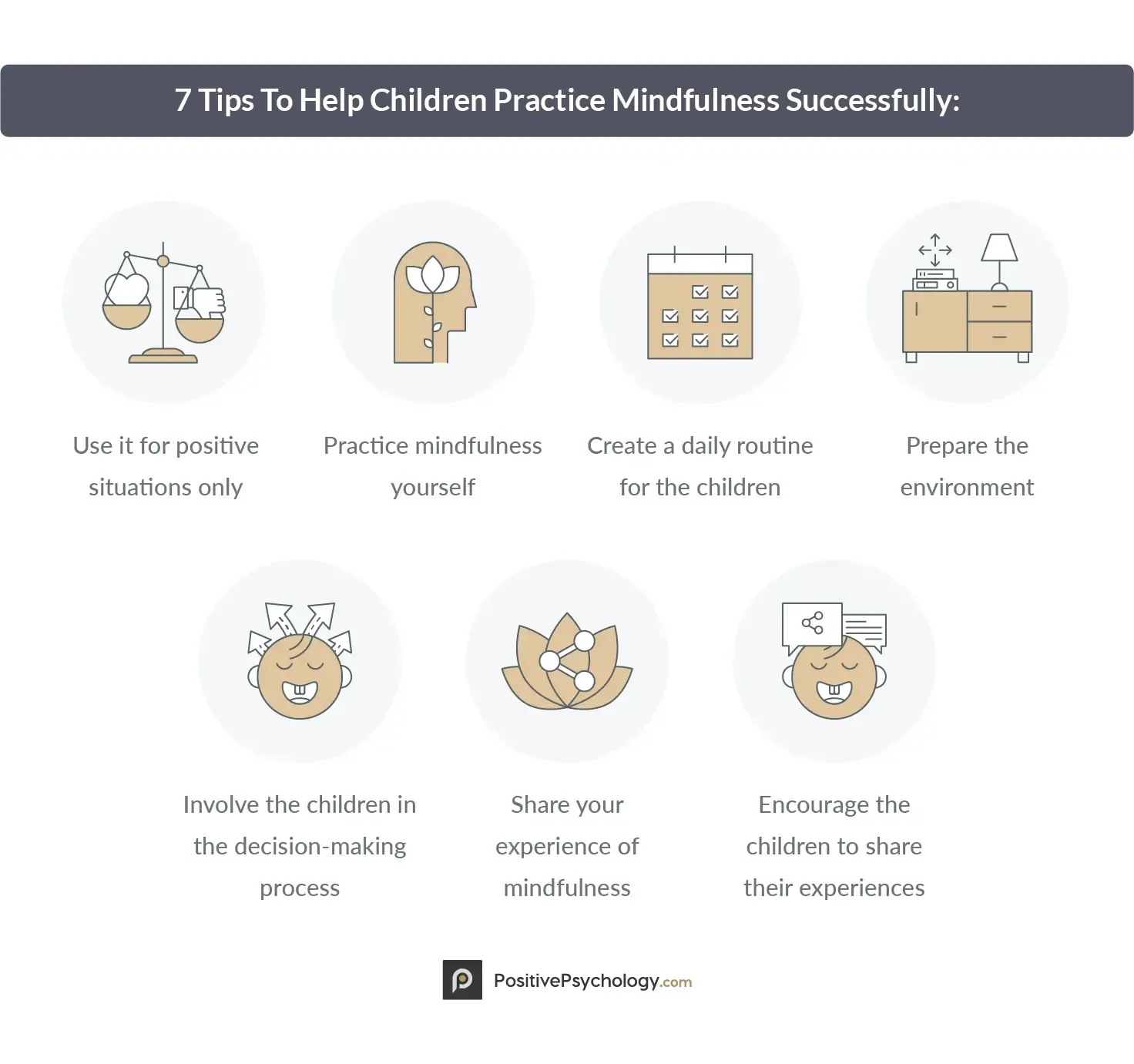
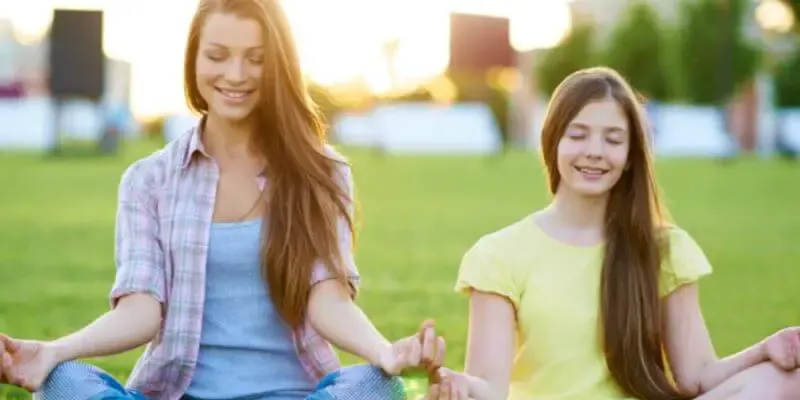

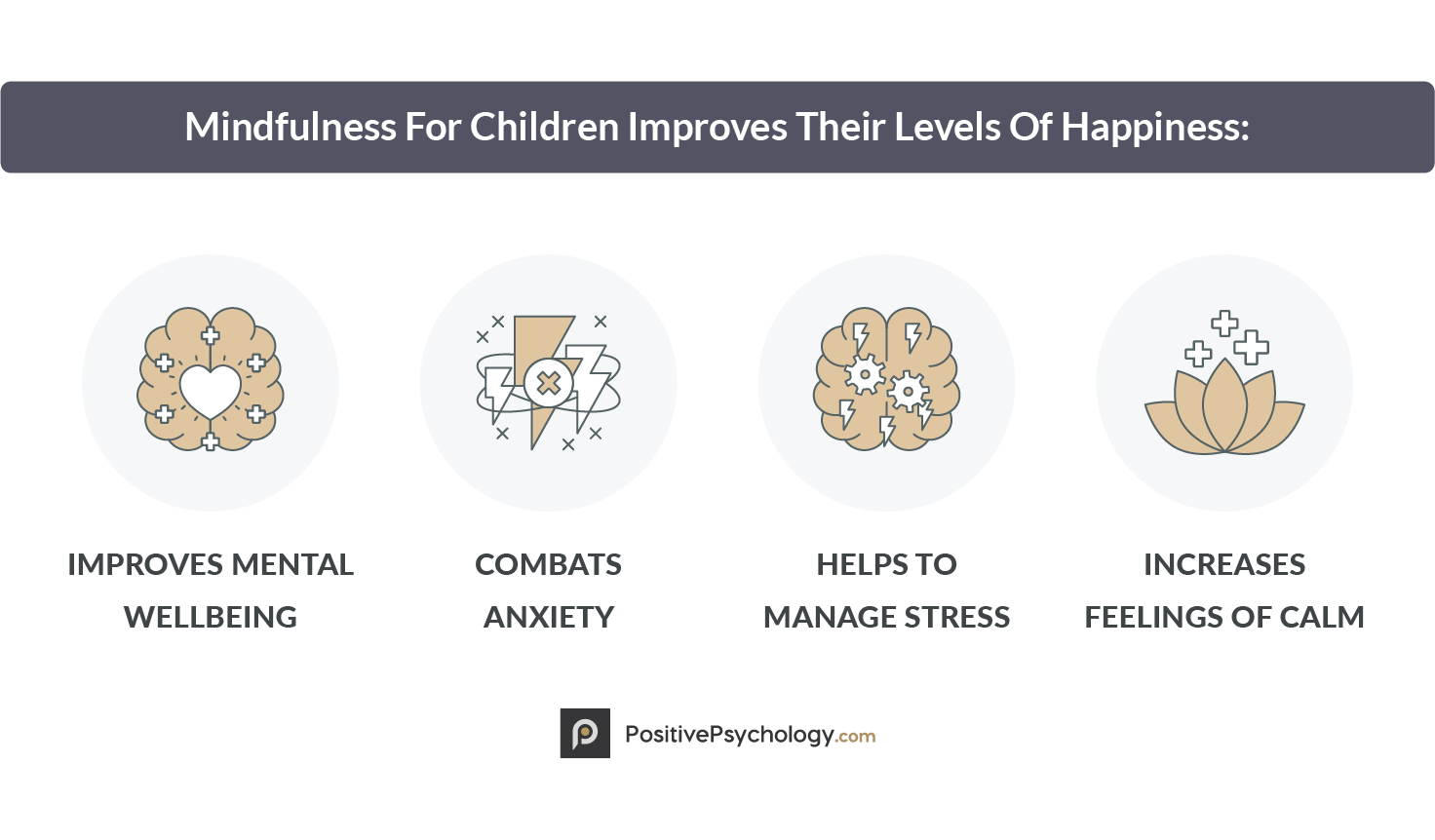

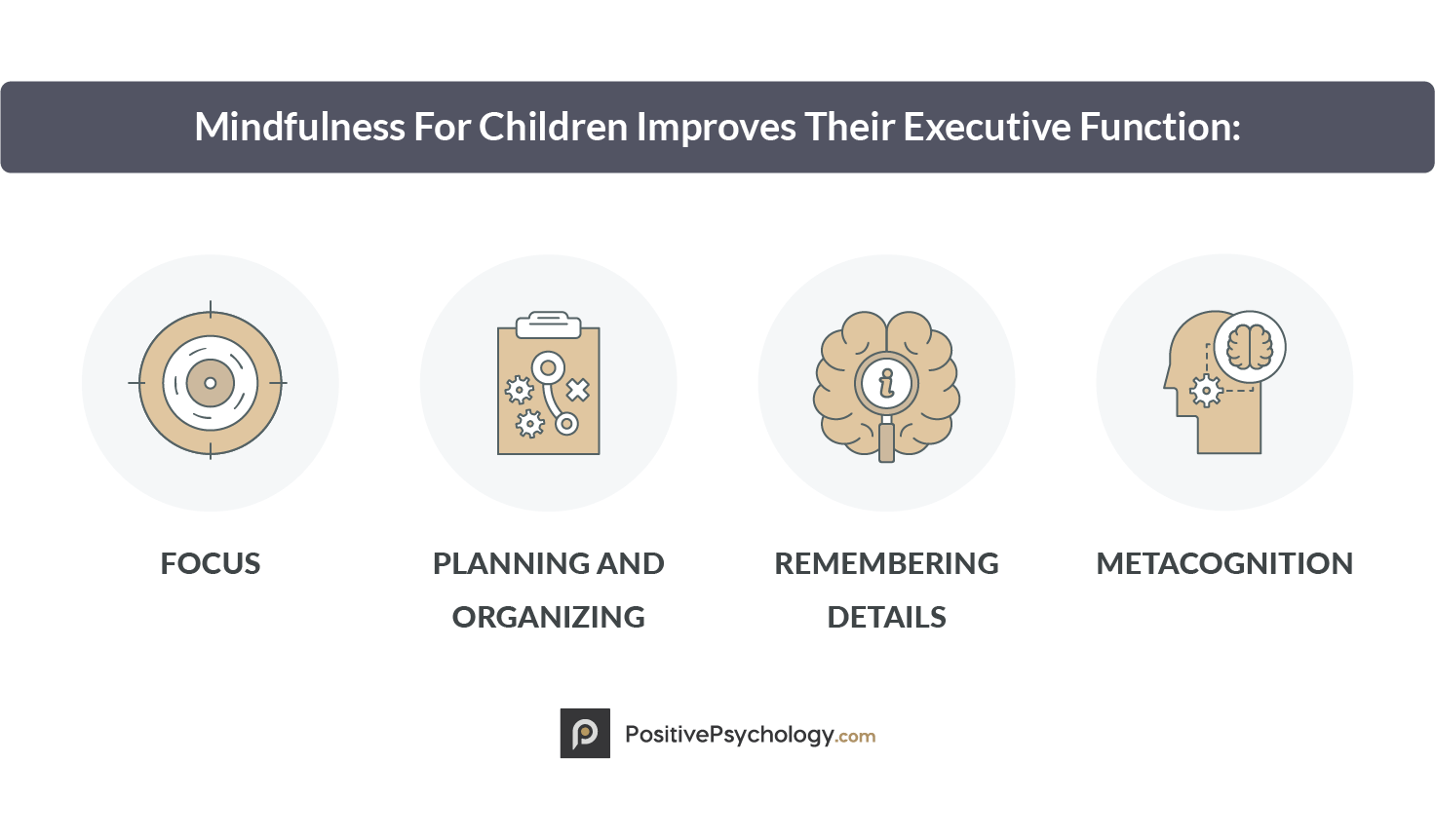



What our readers think
Hi, are these available in Spanish?
Hi Lupe,
I’m afraid we do not currently have translations for our articles/activities. However, this is something we will keep in mind as we continue to develop the platform.
– Nicole | Community Manager
I would be interested in Spanish versions as well.
Google translate
Google docs translate under, TOOLS
Amazingg!!! Thank you so much!!
Working with young children…
The activities are very easily adaptable to Early Years Education. I am able to utilise and adapt most of the above ideas for the wellbeing of very young children. Simple and effective
Hi there, using this page as a resource to share with others. Children are already so mindful, its when we lose it we have to take a moment. I will definitely be practicing this myself!
Thank you for you work.
ee.unknown
This Mindfulness project is an awesome assit to help our population of children world wide
Thank you for the information of a newer way to help our student’s at school and home.
Thank you for helping staff to remaine healthier together in our work place.
All are fhysical activity are very helpful to burn extra calories.